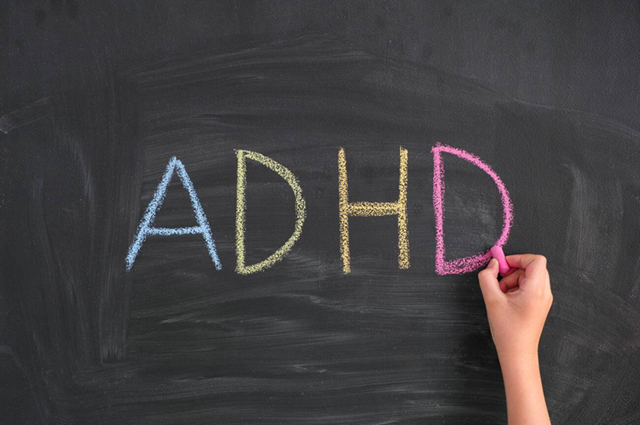The Study of Endocrine Systems’ Affect on the Pathogenesis of ADHD

Attention-deficit/Hyperactivity Disorder (ADHD) is a widespread neurobehavioral disorder known to produce morphological and functional brain abnormalities. Despite its prevalence among children and teenagers, ADHD can continue to impact individuals well into adulthood, with a disproportionate occurrence in males. There is increasing evidence that abnormal immune and endocrine systems may also contribute to the pathogenesis of ADHD.
Overview
The underlying causes of ADHD remain enigmatic, with various theories posited about its origin. A hypothesis suggests that dysfunctions in the dopaminergic, noradrenergic, and serotonergic systems might contribute to ADHD’s development. Additionally, brain volume deficits in specific regions, such as the prefrontal cortex, striatum, and cerebellum, have also been implicated in ADHD.
Recently, research has made significant strides in understanding the role of steroid hormones in the pathogenesis of the disorder. One finding suggests that prenatal exposure to high testosterone levels can increase the risk of ADHD in both boys and girls. Testosterone has also been found to affect the dopamine system in children, which plays a crucial role in motor control. Moreover, studies have shown that estrogens and progesterone have varying impacts on dopamine levels in the striatum, leaving scientists to believe that women with lower levels of estrogen may be more susceptible to ADHD symptoms.
Corticosteroids, including testosterone, may influence the hypothalamic-pituitary-adrenal axis, which is responsible for regulating the autonomic nervous system and metabolism. In some cases, glucocorticoids were observed to affect cytokine levels, with a decrease in pro-inflammatory cytokines, such as interleukin (IL)-1β, IL-6, IL-8, IL-12, IL-18, and tumour necrosis factor-alpha (TNF-α). High levels of pro-inflammatory cytokines have been observed in children with ADHD and are related to the severity of its symptoms. An increase in anti-inflammatory cytokines, like IL-10 and transforming growth factor beta (TGF-β), was also noted.
Analysis
A study aimed to investigate the roles of the immune and endocrine systems used hypertensive rats (SHRs) as a model for ADHD, while Wistar Kyoto rats (WKYs) served as the control group. Concentrations of biological substances, such as steroid hormones and steroidogenic enzymes, were then compared between the two groups.
The Main Objectives
This study examined the prefrontal cortex (PFC), where weaknesses are thought to play a significant part. Previous imaging studies have shown PFC alterations and weakened activation in ADHD patients. The D2 receptor and TH were studied for their role in hyperactivity and dopamine synthesis, respectively. Both hemispheres were analyzed, as brain abnormalities may only occur in one. Prepubertal male animals were selected as brain abnormalities related to ADHD are expected before puberty and are more prevalent in males.
The concentrations of cytokines, chemokines, oxidative stress markers, metabolic parameters, steroid hormones, and steroidogenic enzymes were measured in the serum and tissues of the rats. The volume of the medial prefrontal cortex (mPFC) and the density of dopamine 2 (D2) receptor-expressing cells and tyrosine hydroxylase (TH)-positive nerve fibres in the mPFC were also analyzed.
Procedure
ELISA techniques were utilized to measure hormone levels in the peripheral blood, spleen, and adrenal gland samples. The results of these measurements were used to assess the concentrations of these substances in the serum and tissues of both the SHRs and WKYs.
The immunohistochemistry techniques were applied to the brain sections to evaluate the volume of the medial prefrontal cortex (mPFC) and the density of dopamine 2 (D2) receptor-expressing cells and tyrosine hydroxylase (TH)-positive nerve fibres in the mPFC. These evaluations were crucial in determining the presence of specific protein markers and changes in the mPFC that may be associated with ADHD.
The collection and processing of these biological samples allowed for a comprehensive examination of the various systems and processes that may contribute to the pathogenesis of ADHD in juvenile and maturating animals.
Conclusion
The study revealed that in juvenile SHRs, compared to the age-matched WKYs, there was a significant increase in the concentrations of cytokines, chemokines, and oxidative stress markers in the serum and tissues. These increases were accompanied by a reduction in the volume of the mPFC and an upregulation of the D2 receptor in this brain region. In maturating SHRs, the levels of inflammatory and oxidative stress markers were observed to be normalized, with an increase in steroid hormone levels. The increased levels of steroid hormones in mature SHRs may serve as a compensatory mechanism to decrease inflammation and alleviate symptoms of ADHD.



